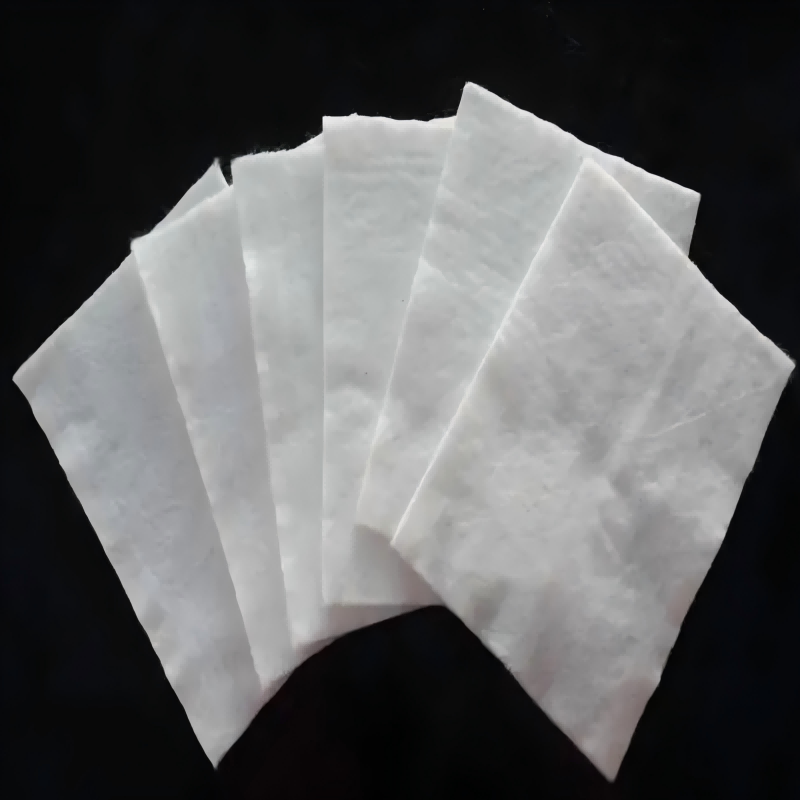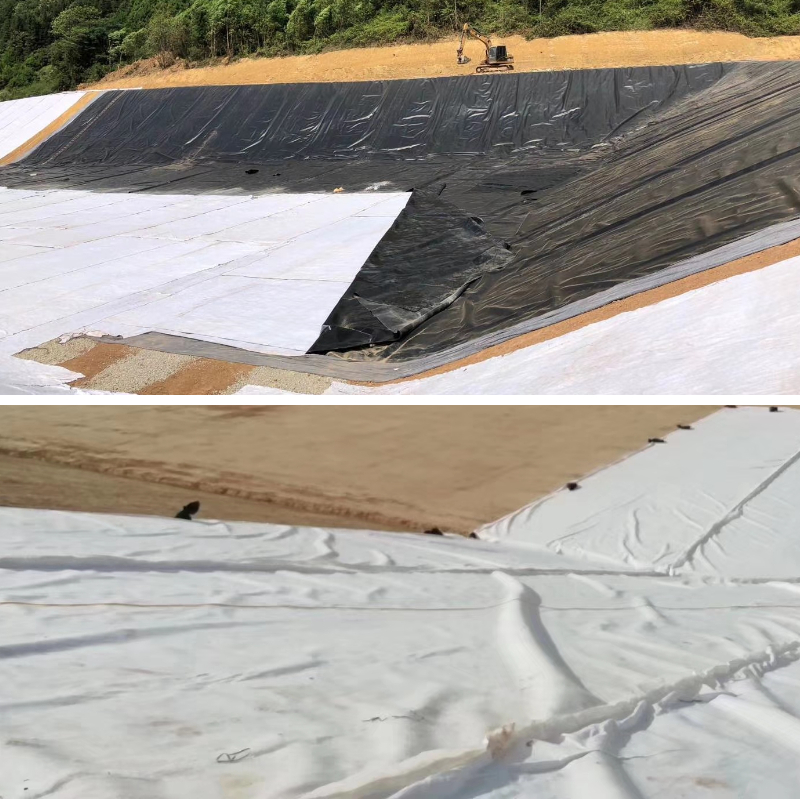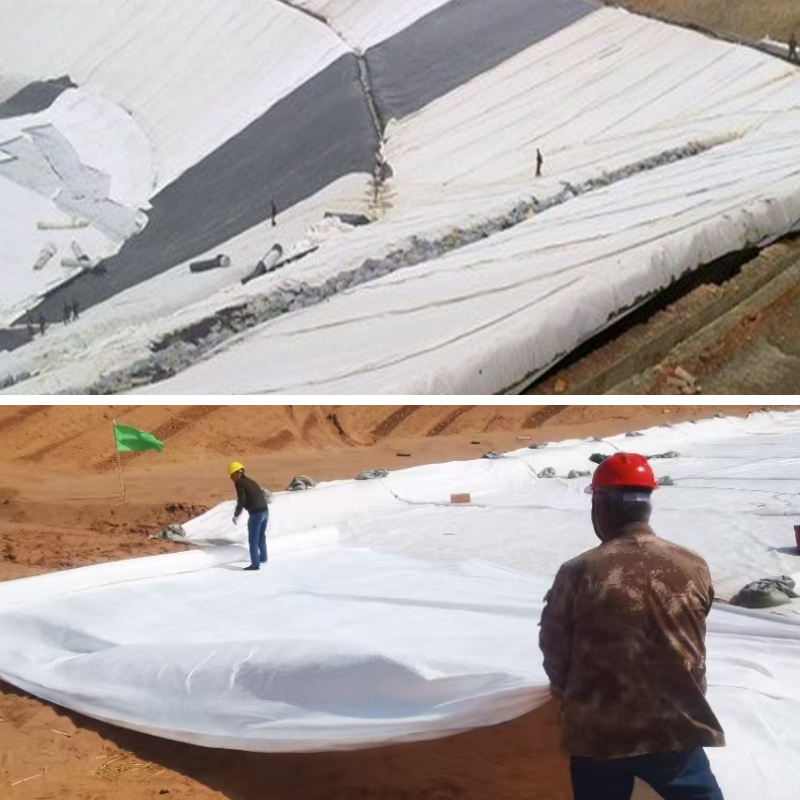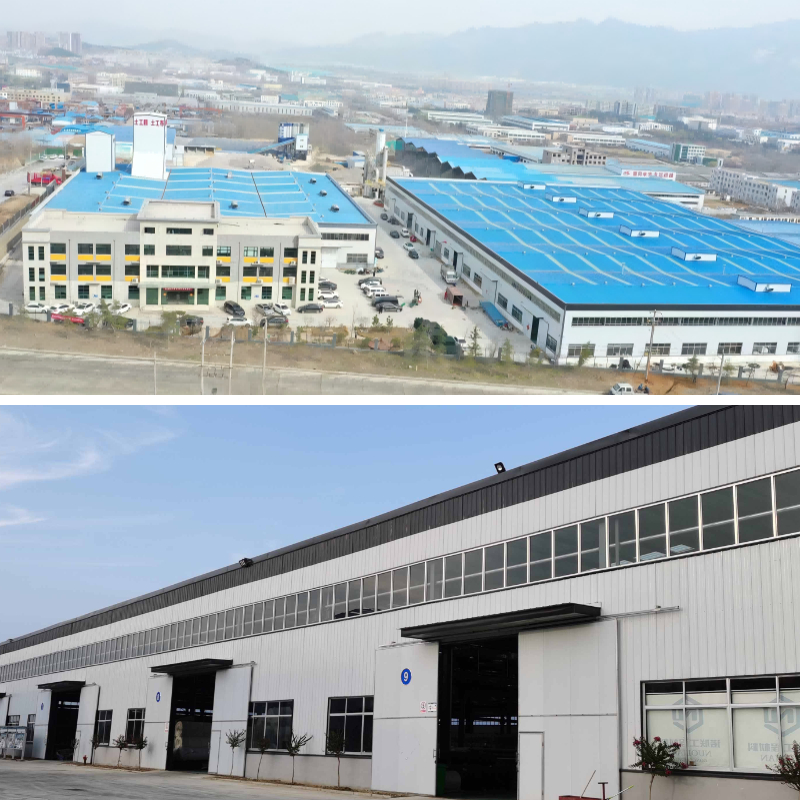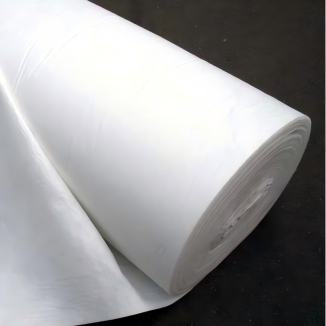Geotextile Racine
1.Root Penetration Resistance: Prevents plant root penetration, protecting structures, pipelines, and other installations from damage.
2.Stabilization and Protection: Separates different soil layers, enhances soil stability, and reduces the risk of erosion and collapse.
3.Filtration and Drainage: Allows water to pass through while retaining soil particles, preventing waterlogging and clogging of drainage systems.
4.Durability and Cost-Effectiveness: Resistant to corrosion, long-lasting, and easy to install, helping shorten construction periods and reduce maintenance costs.
Product Introduction
1. Basic Properties
Material: Geotextile Racine are typically made of synthetic fibers such as polypropylene and polyester.
Structure: Geotextiles can be categorized as woven or non-woven. Woven geotextiles are made by weaving fibers together, while non-woven geotextiles use processes such as needle punching and heat pressing to randomly arrange or bond the fibers together.
Physical Properties: Thickness depends on the forming method, but weight per square meter generally ranges from 16 grams to 900 grams. Widths range from 1 to 18 meters, with no limit on length.
2. Core Functions
Isolation: Geotextiles can separate soil layers or materials with different physical properties, preventing mixing and maintaining the integrity and stability of each layer. For example, in road construction, this can prevent contamination of base materials with subgrade soil.
Filtration: Geotextiles act as high-efficiency filters, trapping soil particles while allowing water to pass through, creating drainage channels within the soil and preventing clogging of drainage systems.
Drainage: Geotextiles have excellent water permeability, allowing moisture to drain quickly from the soil, preventing soil erosion or structural stability issues caused by water accumulation. Reinforcement: It enhances the tensile strength and deformation resistance of soil, improving soil quality, and increasing its bearing capacity and stability. It plays a role in reinforcing dams, retaining walls, and other projects.
3. Main Features
High Strength: It boasts high tensile and tear strength, maintaining full strength and elongation in both dry and wet conditions, and can withstand a variety of external forces.
Durability: It is corrosion-resistant, microbial-resistant, and age-resistant, ensuring long-term use in harsh environments.
Easy Installation: The lightweight and flexible material makes it easy to transport and lay, simplifying installation and significantly shortening construction timelines and reducing labor intensity.
Cost-Effectiveness: It has a long service life, reducing maintenance and replacement frequency, and resulting in a lower overall cost.
Product Parameters
project | metric | ||||||||||
Nominal strength/(kN/m) | |||||||||||
6 | 9 | 12 | 18 | 24 | 30 | 36 | 48 | 54 | |||
1 | Longitudinal and transverse tensile strength / (kN/m) ≥ | 6 | 9 | 12 | 18 | 24 | 30 | 36 | 48 | 54 | |
2 | Maximum elongation at maximum load in longitudinal and transverse directions/% | 30~80 | |||||||||
3 | CBR top penetration strength /kN ≥ | 0.9 | 1.6 | 1.9 | 2.9 | 3.9 | 5.3 | 6.4 | 7.9 | 8.5 | |
4 | Longitudinal and transverse tearing strength /kN | 0.15 | 0.22 | 0.29 | 0.43 | 0.57 | 0.71 | 0.83 | 1.1 | 1.25 | |
5 | Equivalent aperture O.90(O95)/mm | 0.05~0.30 | |||||||||
6 | Vertical permeability coefficient/(cm/s) | K× (10-¹~10-), where K=1.0~9.9 | |||||||||
7 | Width deviation rate /% ≥ | -0.5 | |||||||||
8 | Unit area mass deviation rate /% ≥ | -5 | |||||||||
9 | Thickness deviation rate /% ≥ | -10 | |||||||||
10 | Thickness coefficient of variation (CV)/% ≤ | 10 | |||||||||
11 | Dynamic perforation | Puncture hole diameter/mm ≤ | 37 | 33 | 27 | 20 | 17 | 14 | 11 | 9 | 7 |
12 | Longitudinal and transverse fracture strength (grab method)/kN ≥ | 0.3 | 0.5 | 0.7 | 1.1 | 1.4 | 1.9 | 2.4 | 3 | 3.5 | |
13 | Ultraviolet resistance (Xenon arc lamp method) | Longitudinal and transverse strength retention rate% ≥ | 70 | ||||||||
14 | Ultraviolet resistance (fluorescence UV lamp method) | Longitudinal and transverse strength retention rate% ≥ | 80 | ||||||||
Product Application
1. Buildings and Underground Facilities: Primarily laid outside building foundations and around underground water/gas pipelines, its special puncture-resistant construction prevents the roots of surrounding trees and shrubs from penetrating the structure or pipeline walls, preventing cracks in the foundation and damage to pipelines. It also isolates soil layers of varying textures, preventing mixing that could affect structural stability, fundamentally ensuring the long-term safe operation of underground facilities.
2. Landscaping: In rooftop greening and vertical greening projects, it is laid between the planting soil layer and the roof waterproofing layer/wall structure. It not only forms a "root barrier" to protect the waterproofing layer from plant roots, but also traps soil particles and allows water to penetrate, preventing waterlogging in the planting layer and root rot of flowers and shrubs. In slope greening or large green spaces, it also serves as a barrier to the planting medium, limiting the spread of weed roots and reducing soil erosion caused by rainwater erosion.
3. Transportation Infrastructure: Used in roadbed construction for highways and railways, as well as in site expansion projects such as logistics yards and industrial parks. Its high strength reinforces the base, effectively controlling ground subsidence and deformation, and reducing the thickness of the aggregate cushion layer to reduce costs. It also prevents the upward migration of fine roadbed particles, ensuring that the road surface and site maintain a stable load-bearing capacity even under long-term traffic loads or heavy equipment.
4. Water Conservancy and Ecology: Widely used in river bank protection, reservoir embankment reinforcement, and coastal protection projects, it prevents the roots of aquatic plants and bankside weeds from damaging dams and slope protection structures, preventing cracks in the structure. Its permeability also allows it to drain accumulated water within the project, reducing soil pore water pressure and preventing landslides and seepage. It can also be used in conjunction with other protective materials to mitigate wave impact, maintaining water, soil, and coastline stability.
5. Environmental Protection Industry: It serves as a bottom barrier in landfills, preventing leachate from seeping downward and contaminating groundwater. It also blocks surrounding plant roots from invading the reservoir and damaging the anti-seepage system. Used in sludge drying beds and sludge pits at sewage treatment plants, it controls sludge seepage and spread, improves sludge treatment efficiency, and resists microbial attack, extending the service life of environmental protection facilities.
Geotextile Racine , with its core advantage of preventing root penetration, integrates multiple functions such as isolation, reinforcement, and water filtration, serving five key sectors: construction, landscaping, transportation, water conservancy, and environmental protection. It not only effectively addresses the destructive effects of plant roots on engineering structures, but also optimizes construction costs and enhances the stability and service life of facilities. It is a crucial auxiliary material in modern engineering construction, balancing practicality, economy, and ecological considerations, providing reliable assurance for project safety and long-term operation in diverse scenarios.



